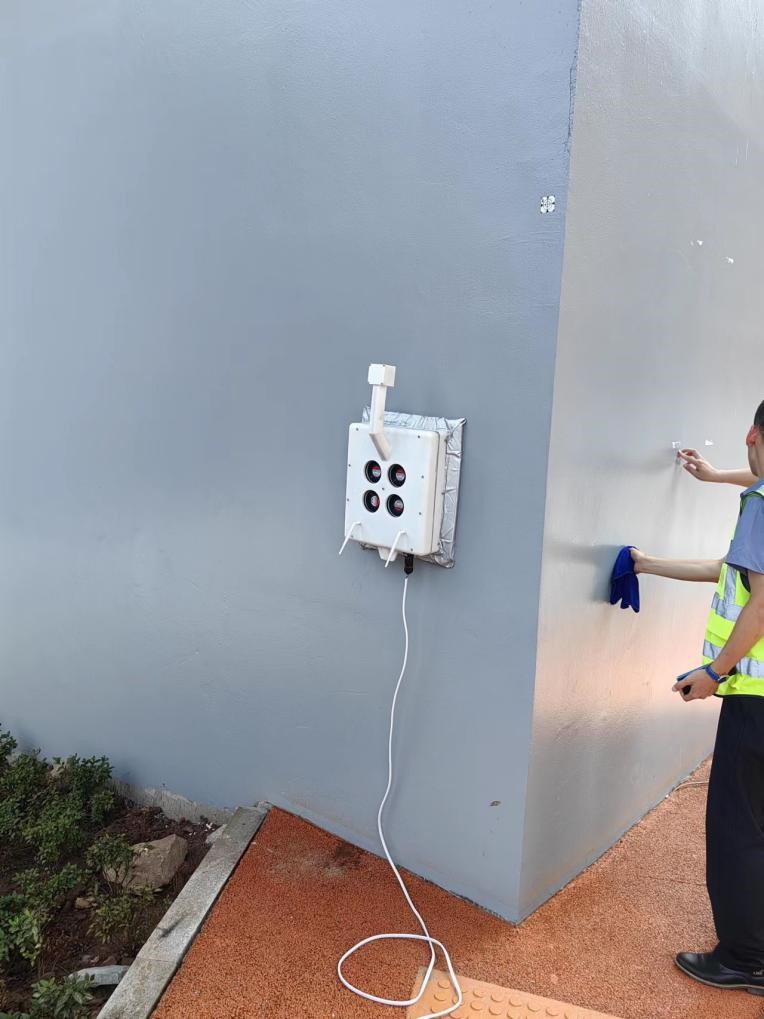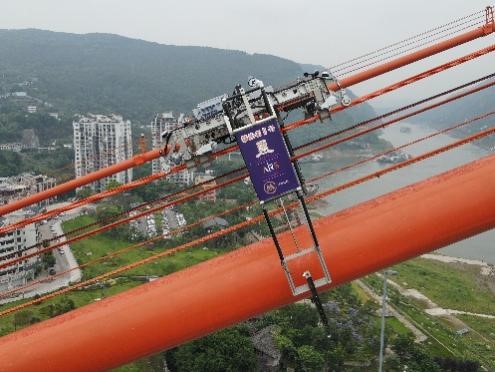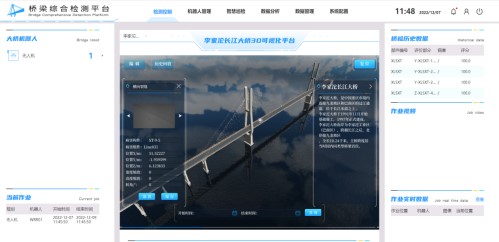
On May 18,2023, the main cable inspection robot "Climber II" jointly developed by China Merchants Communications Institute and The Chinese University of Hong Kong (Shenzhen) carried out inspection application test on Guojiatuo Changjiang River Bridge in Chongqing. The robot crawled more than 200 meters on the main cable of the side span of the bridge and successfully climbed to the top of the cable tower, filling the gap in the industry and providing a new intelligent detection equipment for the main cable detection of suspension bridge.
"Climber II" robot is a main cable appearance inspection equipment which uses the handrail rope in the auxiliary facilities of suspension bridge as climbing carrier, and two groups of holding boots open and close alternately and creep forward. The robot has the function of changing orbit, and the distance between the holding shoes can be adjusted horizontally, which can better adapt to the environment of different cable systems of suspension bridges. The modular design of robot parts greatly shortens installation time and is more efficient.
Besides, the vision sensor array has the function of automatic distance adjustment, and the detection camera installed at the end of the support arm composed of lightweight composite materials can automatically adjust the position according to the diameter of the main cable, and can obtain high-quality graphics of the main cables with different diameters.
In the test, "Climber II" assisted in identifying many main cable defects including cracks, loose screws, pits, etc., and successfully climbed the tower at the side span. According to the available public information, this is the first time in China that a robot climbed the tower along the main cable. The climbing verified the robot's excellent dynamic performance and climbing ability, and provided new methods and equipment for intelligent detection of main cables of suspension bridges.
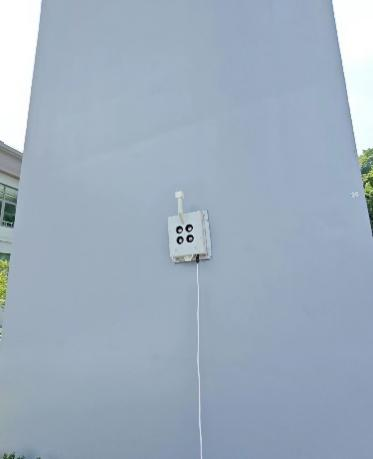
Application test of wall-climbing robot in Chongqing Sujiagou Bridge, Guojiatuo Changjiang River Bridge and other bridges and intelligent detection platform.
The wall-climbing robot can crawl along the wall and collect apparent data, and the wall-climbing robot is retracted after the detection is completed, and the apparent detection image data is transmitted to the intelligent detection platform vehicle.
The intelligent detection platform can read the position, heading angle, linear velocity, angular velocity, edge detection and photo data of the wall-climbing robot through the wireless network; The system can send commands through wireless network to control the wall-climbing robot to start, stop and execute tasks successfully. It can also successfully process the later data and export it.
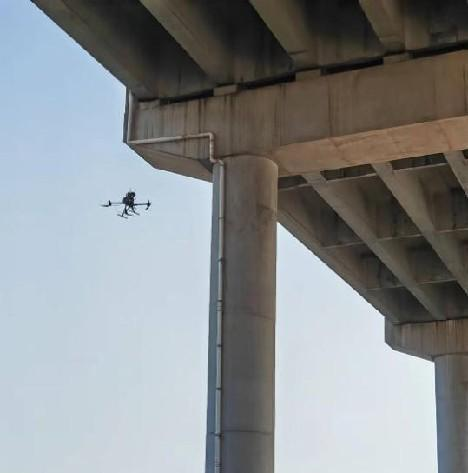
Application test of bridge inspection UAV in Chongqing Sujiagou Bridge, Hangzhou Bay Bridge and other bridges and intelligent detection platforms.
The UAV can generate a full coverage automatic flight trajectory for the area to be measured; The UAV can fly autonomously according to the planned trajectory and collect apparent images in real time; It can transmit the apparent detection image data to an intelligent detection platform.
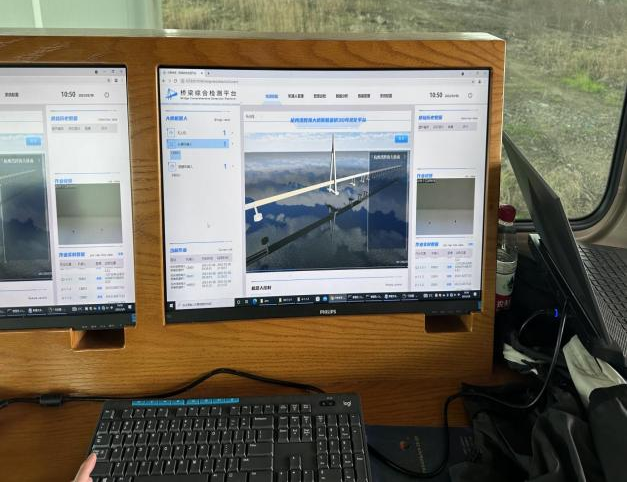
The intelligent detection platform carried by the bridge inspection integrated service command vehicle has been tested jointly with several robots in Hangzhou Bay Bridge and other bridges.
The intelligent detection platform has the functions of systematic integrated control of multi-type robots, stable communication and monitoring, detection data processing and analysis, three-dimensional disease traceability, real-time evaluation and feedback of bridge technical conditions, and mobile field rapid operation capability. The multi-source data fusion and online damage assessment technology of bridge detection are effectively realized.
The intelligent inspection platform can realize the integrated control of multi-type robots, and control multi-robots to carry out inspection for different parts of the bridge at the same time. Taking the UAV as an example, the intelligent detection platform can read the position of the bridge inspection UAV and the video of the onboard camera through the wireless network; The bridge inspection integrated service vehicle sends instructions to plan and dispatch inspection tasks through wireless network, controls the pan/tilt rotation (pitch and yaw) of the bridge inspection UAV, camera lens switching (wide-angle lens and zoom lens), focal length of zoom lens, zoom lens shutter mode switching (automatic shutter and manual shutter), fill light switch and executes successfully. In addition, it can successfully process the later data and export it to form a rapid inspection report.
 Your current location:
home
>
Exhibition Hall Online
>
Venue Layout
>
N1
>
Ministy of Science and Technology
>
China Merchants Chongqing Comm...
Your current location:
home
>
Exhibition Hall Online
>
Venue Layout
>
N1
>
Ministy of Science and Technology
>
China Merchants Chongqing Comm...
